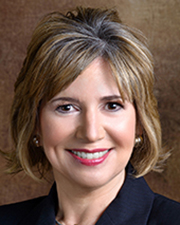


The manufacturing industry plays an essential role in Massachusetts’ economy but faces several issues that prevent uninhibited growth. The pandemic led many manufacturing employees to pursue alternate paths. Some found virtual positions, others sought new careers, and many left the workforce completely to care for children whose daycares had closed due to pandemic restrictions, all of which left notable gaps on the production floor. The rising cost of living and lack of housing in Massachusetts has also made it impossible for many to reside here. A surge in costs stemming from inflation and rising interest rates, along with a lack of awareness regarding resources from the state and external organizations, has exacerbated the worker shortage.
Nevertheless, there are solutions to these seemingly unconquerable hurdles. Here are four strategies for overcoming the most pressing issues facing manufacturers today:
Maximize your current workforce: After continued difficulty attracting new employees, many manufacturers are coming to the unfortunate conclusion that they will never fill the gaps left by their previous employees; however, shifting focus away from talent scouting and towards maximizing efficiency among your current staff could offer the ideal solution. Streamlining the processes in your facility can boost production efficiency, making workforce gaps less glaring or reducing the need to fill empty positions at all. Examples of streamlining include optimizing the floorplan by a real estate renovation or by moving equipment around, identifying and eliminating unnecessary production steps, and ensuring that existing employees are placed in value-add positions to ensure connectivity and flow on the floor. Automating certain processes when possible is also cost-effective in the long run and can boost retention by reducing stress among current employees. Enlisting an outside subject matter specialist on the manufacturing industry such as MassMEP or Business Development Strategies to reduce costs for real estate renovations or expansion projects can provide valuable perspective for companies struggling to optimize space and human resources.
Think outside the box for hiring solutions: Partnerships with organizations like Second Chance, colleges and universities, community colleges, industry trade groups, and technical schools including the Benjamin Franklin Cummings Institute of Technology offer opportunities to source loyal and eager employees from often-overlooked places. A variety of resources and training grants to equip new hires with additional skills necessary to excel in manufacturing are available through the state and other organizations.
Look to the future: In manufacturing, it’s easy to get caught up in the day-to-day business of meeting production requirements, especially when workers are hard to come by and supply chain issues add another layer of anxiety. Nonetheless, identifying long-term goals and being open to change when pursuing them is essential to growth. Determining what change looks like for your specific company is crucial. Is there a certain workforce training grant that would take your employees to the next level, especially if you have workers who are soon retiring and taking their knowledge with them? Is building out DEI policies to attract a younger, more diverse workforce feasible for you? Maybe taking a large step and investing in a facility more conducive to worker efficiency could be the catalyst you need to ignite significant growth. Alternatively, small changes also have the capacity to make large ripples in your company. A simple adjustment to a job description can attract young and diverse applicants. No matter how substantial the change is, it’s necessary to consider how you want the future to look for your organization and take steps to get there.
Lynn Tokarczyk is president and government tax incentives consultant at Business Development Strategies, Inc., Medway, Mass. Kathie Mahoney is president & CEO at MassMEP, Auburn Mass.




